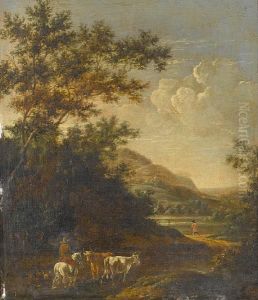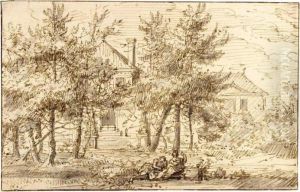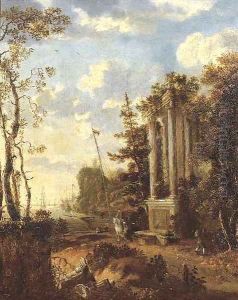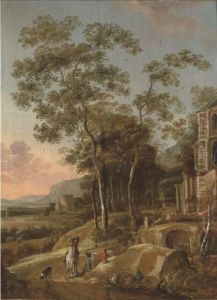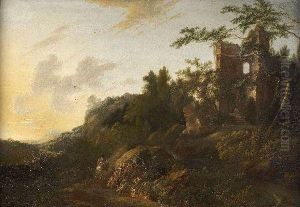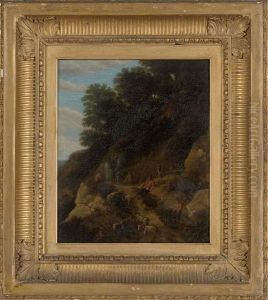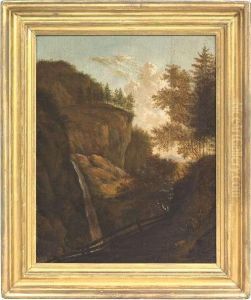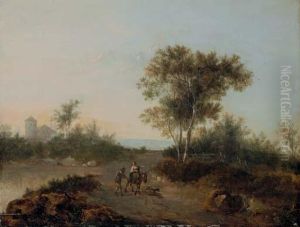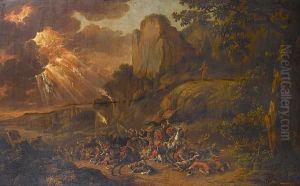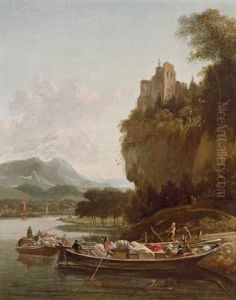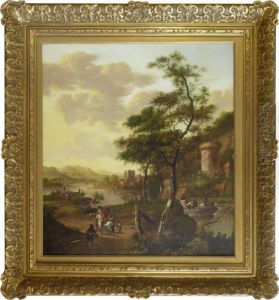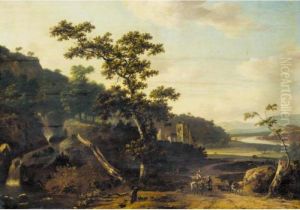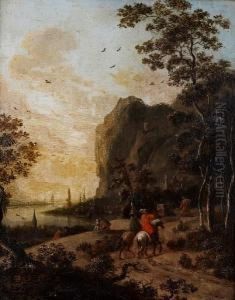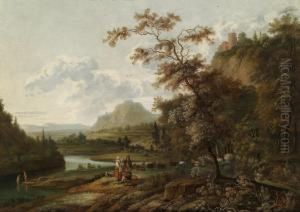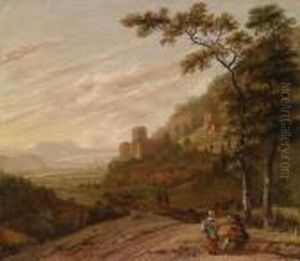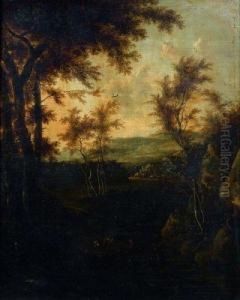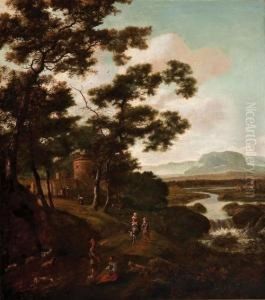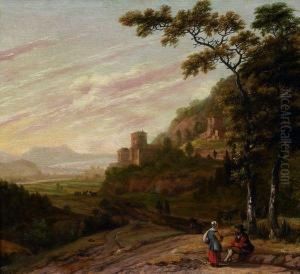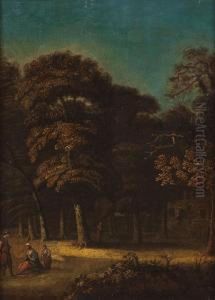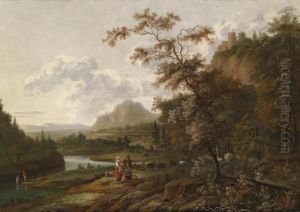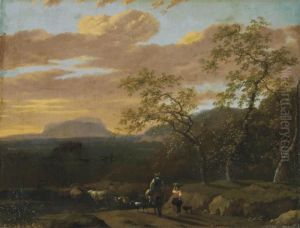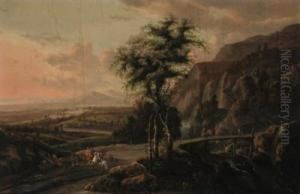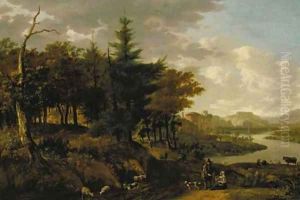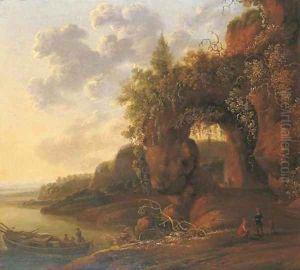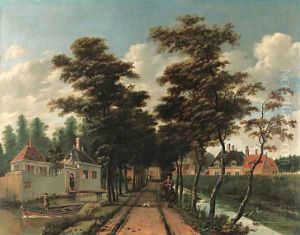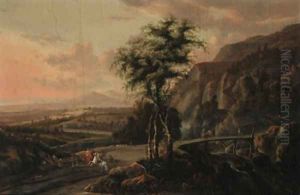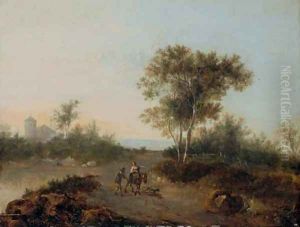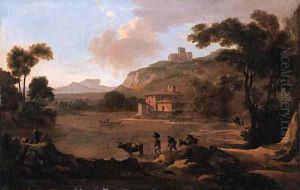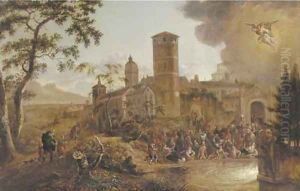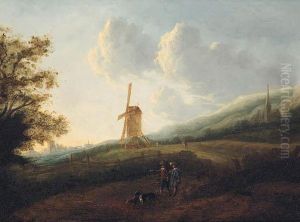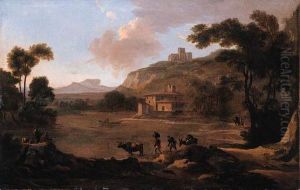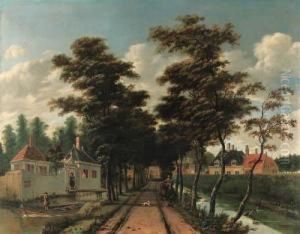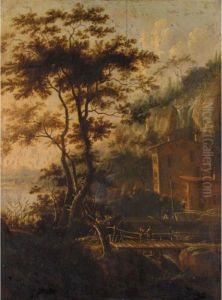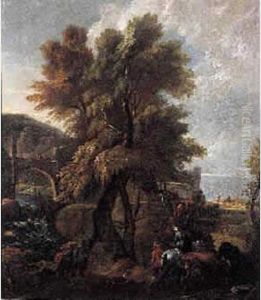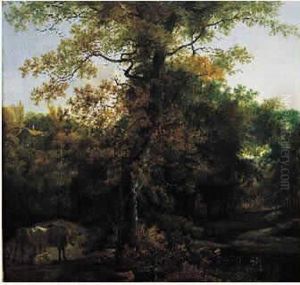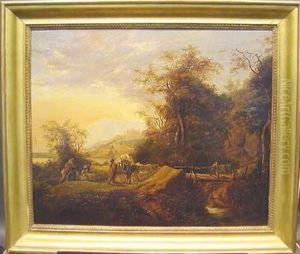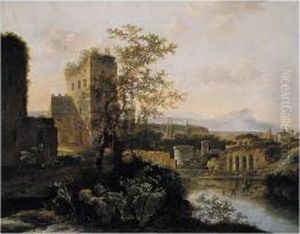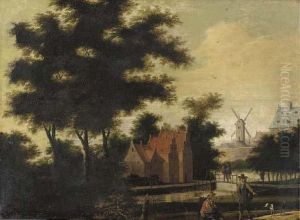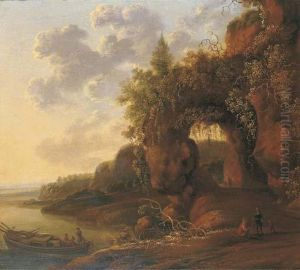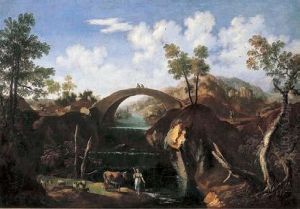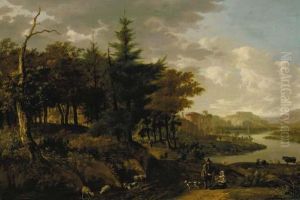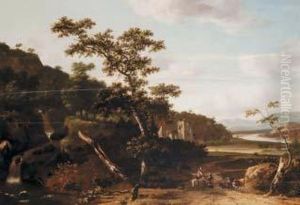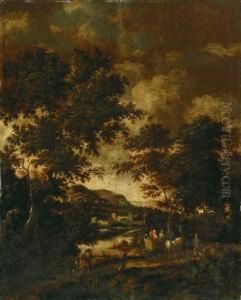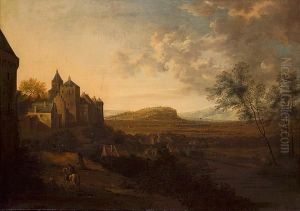Jan Gabrielsz. Sonje Paintings
Jan Gabrielsz. Sonje, also known as Jan Gabriëlsz. Sonjé, was a Dutch painter born in 1625 in Rotterdam, the Netherlands. His exact birth date is not well documented, but he is known to have been active as an artist during the Dutch Golden Age, a period in the 17th century when Dutch art, science, trade, and military prowess were among the most acclaimed in the world.
Sonje was primarily known for his landscape paintings, which often depicted Italianate scenes. Despite being Dutch, like many of his contemporaries, Sonje was influenced by the idealized landscapes of Italy, a trend that was popular among Northern European artists of the time. This was likely due to the grand tour tradition where artists would travel to Italy to study the works of the Renaissance masters and the classical landscape.
His works are characterized by a warm palette and include elements such as classical ruins, pastoral figures, and a meticulous attention to naturalistic detail. However, little is known about his training or whether he actually visited Italy. Sonje’s paintings reflect the influence of other Dutch Italianate painters, such as Jan Both and Cornelis van Poelenburgh, with whom he may have had contact or whose works he might have studied.
Not much is recorded about Sonje's personal life or professional career. His artistic output seems to have been modest, and as a result, he did not gain the same level of fame as some of his contemporaries. Nevertheless, his work contributed to the rich tapestry of Dutch landscape painting during the Golden Age.
Jan Gabrielsz. Sonje died in 1707 in Rotterdam. Today, his paintings can be found in various art collections, and they continue to be studied for their contribution to the Italianate landscape genre in Dutch art. His legacy, while not as prominent as that of some of his peers, remains a part of the historical narrative of Dutch painting.
